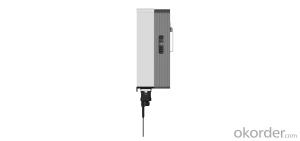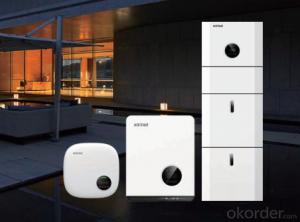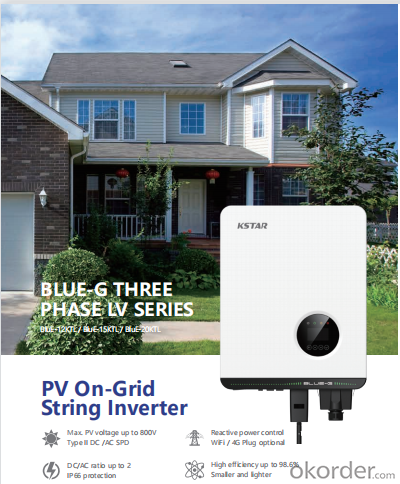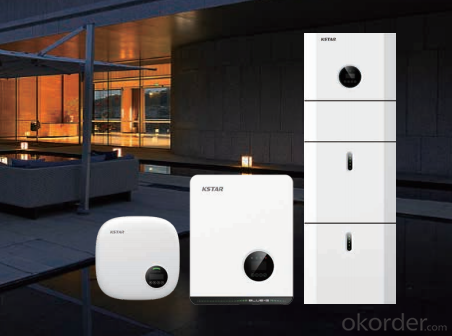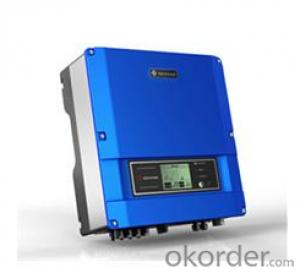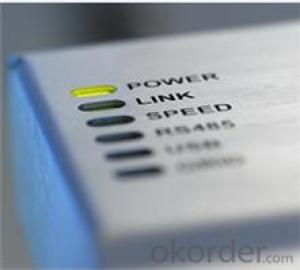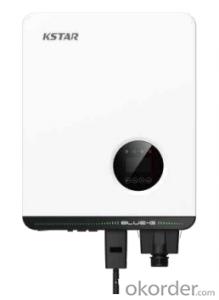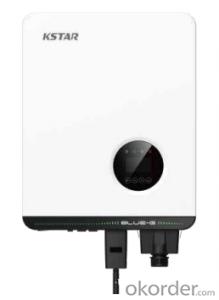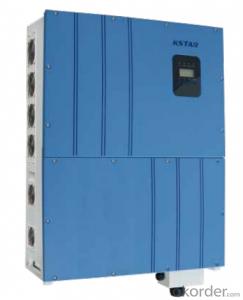New Solar Inverter PV On-Grid String Inverter Blue-12KTL / Blue-15KTL / Blue-20KTL
- Loading Port:
- China main port
- Payment Terms:
- TT OR LC
- Min Order Qty:
- 50 pc
- Supply Capability:
- 15000 pc/month
OKorder Service Pledge
OKorder Financial Service
You Might Also Like
Specification
Product Description:
★Max. PV voltage up to 800V Type II DC /AC SPD
★DC/AC ratio up to 2 IP66 protection
★High efficiency up to 98.6% Smaller and lighter
★Reactive power control WiFi / 4G Plug optional
Technical Specifications:
| MODEL | BluE-12KTL | BluE-15KTL | BluE-20KTL |
| Input(DC) | |||
| Max. DC voltage | 800V | 800V | 800V |
| Nominal voltage | 370V | 370V | 370V |
| Start voltage | 180V | 180V | 180V |
| MPPT voltage range | 200V-750V | 200V-750V | 200V-750V |
| Number of MPP tracker | 2 | 2 | 2 |
| Strings per MPP tracker | 2 | 2 | 2 |
| Max. Input current Per MPPT | 30A | 30A | 30A |
| Max. short-circuit current per MPPT | 40A | 40A | 40A |
| Output(AC) | |||
| Nominal AC output power | 12000W | 15000W | 20000W |
| Max. AC apparent power | 13200VA | 16500VA | 22000VA |
| Nominal AC Voltage | 220V 3L+N | 220V 3L+N | 220V 3L+N |
| AC Grid frequency Range | 50Hz / 60Hz±5Hz | 50Hz / 60Hz±5Hz | 50Hz / 60Hz±5Hz |
| Max. Output Current (A) | 34.6A | 43.3A | 57.7A |
| Power Factor (cos ) | 0.8 leading to 0.8 lagging | ||
| THDi | <3% | ||
| Efficiency | |||
| Max. Efficiency | 98.60% | 98.60% | 98.60% |
| Euro Efficiency | 98.30% | 98.30% | 98.30% |
| Protection devices | |||
| DC Switch | Yes | ||
| Anti-islanding Protection | Yes | ||
| Output Over Current | Yes | ||
| DC Reverse Polarity Protection | Yes | ||
| String Fault Detection | Yes | ||
| AC/DC Surge protection | DC: Type II / AC: Type III / Type II Optional | ||
| Insulation Detection | Yes | ||
| AC Short Circuit Protection | Yes | ||
| General Specifications | |||
| Dimensions W x H x D (mm) | 380*483*193 | 380*483*227 | 380*483*227 |
| Weight(kg) | <25 | <35 | <35 |
| Environment | |||
| Operating Temperature range | –25℃~+60℃ | ||
| Cooling Type | Fan Cooling | ||
| Max. Operation Altitude | 4000m | ||
| Max. Operation Humidity | 0-100%(No Condensation) | ||
| AC Output Terminal Type | Quick Connector | ||
| Topology | IP66 | ||
| IP Class | Transformer-less | ||
| Communication Interface | RS485/WIFI/4G | ||
| Display | LCD | ||
| Certification & Standard | EN/IEC62109-1/2;IEC/EN61000-6-2;IEC/EN61000-6-4;IEC61683; IEC60068;IEC60529;IEC62116;IEC61727; | ||
FAQ:
Q:How the output voltage of the PV inverter and the grid-connected voltage are determined
Inverter is the DC power (battery, battery) into alternating current (usually 220V, 50Hz sine wave). It consists of inverter bridge, control logic and filter circuit. Widely used in air conditioning, home theater, electric wheel, power tools, sewing machines, DVD, VCD, computer, TV, washing machine, range hood, refrigerator, video recorders, massage, fan, lighting and so on. In foreign countries
Q:Installation and maintenance of photovoltaic grid - connected inverter
only when the local power sector permission by the professional and technical personnel to complete all the electrical connection before the inverter can be connected.
Q:What is the difference between a PV grid-connected inverter and an off-grid inverter?
Off-grid inverter is equivalent to their own to establish an independent small power grid, mainly to control their own voltage, is a voltage source.
Q:After the PV inverter, how to achieve the same period before the network?
Solar panel simulator: with MPPT function, simulated morning, noon, afternoon, evening, rainy weather, solar panels produced under different conditions in different voltages.
Q:Is the PV inverter a current source or a voltage source?
According to the waveform modulation method can be divided into square wave inverter, stepped wave inverter, sine wave inverter and modular three-phase inverter.
Q:Photovoltaic grid-connected inverter without DC emc how will happen
Solar photovoltaic power generation technology is the use of solar cells, the photovoltaic effect of semiconductor materials, solar radiation can be directly converted into a new type of power generation system, solar energy is a radiant energy, solar power means --- to direct conversion of sunlight Into electricity,
Q:What is the difference between low voltage grid connection and medium voltage grid connection?
For photovoltaic power plants when the power system accidents or disturbances caused by photovoltaic power plant grid voltage drop, in a certain voltage drop range and time interval, the photovoltaic power plant can ensure that non-off-line continuous operation.
Q:Is the grid side of the grid and the inverter?
The grid load side of the grid is the grid. The inverter is an important part of the PV grid-connected system and can not be regarded as an external load. Photovoltaic power generation system is included in both grid and off-grid.
Q:PV grid-connected inverter and independent inverter in the control of what is the difference
The independent inverter in the output voltage phase amplitude of the frequency control is initially set good. Independent inverter, you should refer to off-grid inverter, do not need to consider the grid situation.
Product Images:

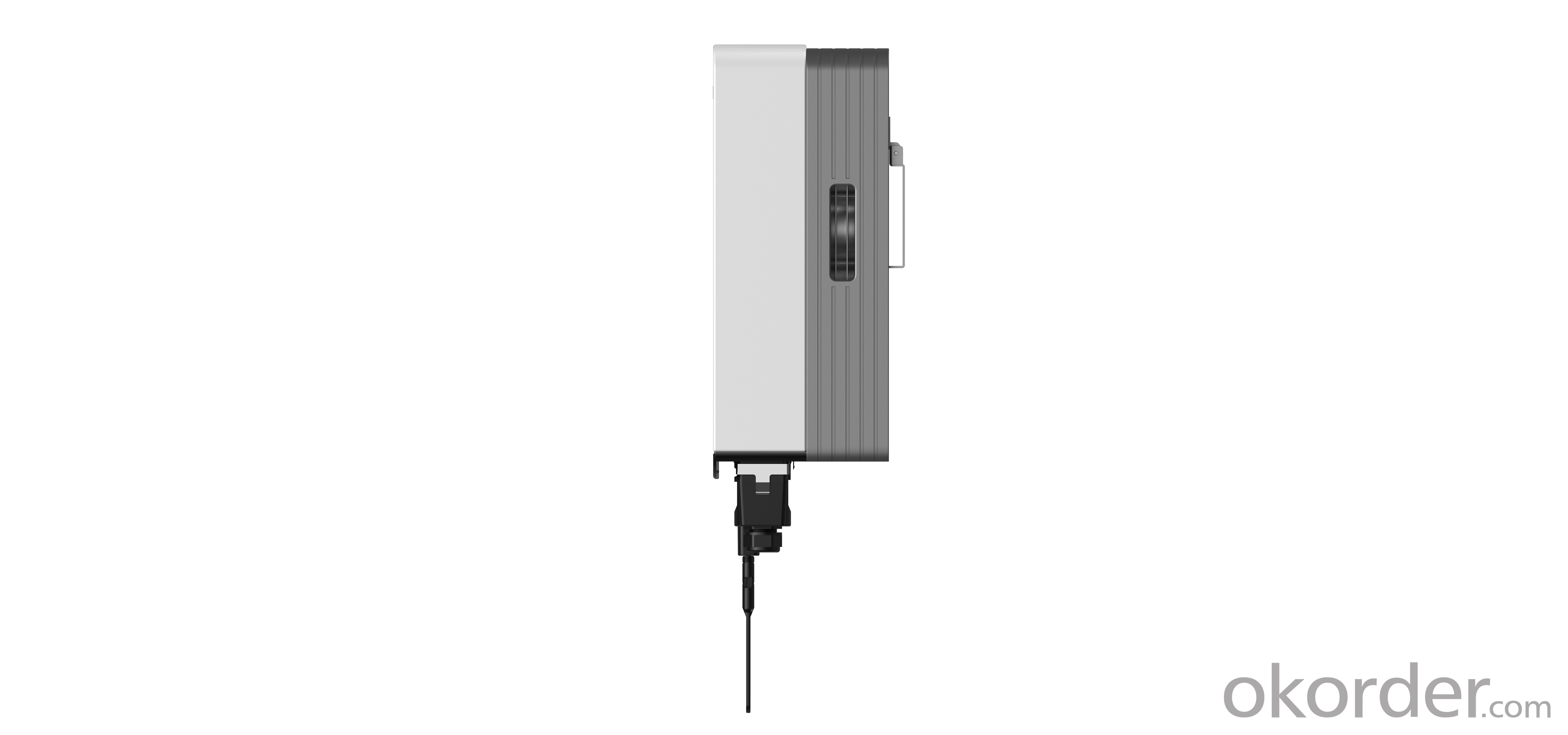

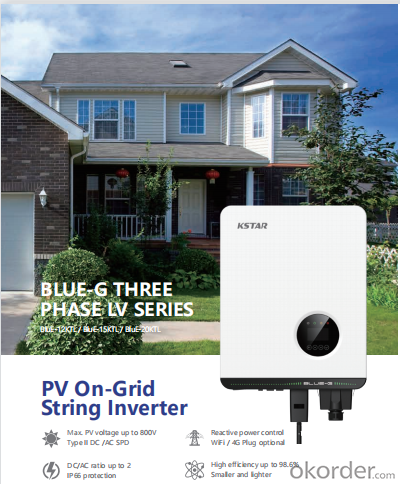
Production Process Photos:

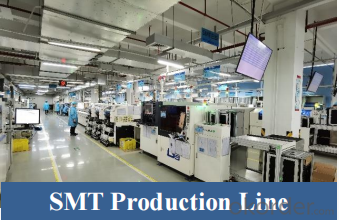
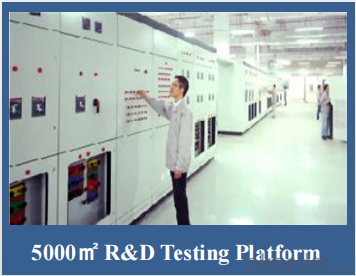
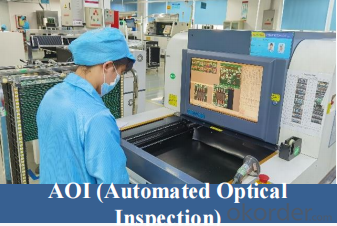
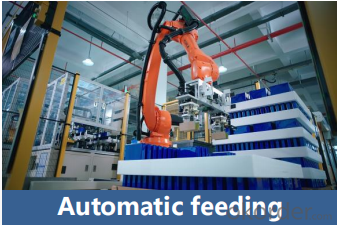
- Q: Can a solar inverter be used in conjunction with a smart home system?
- Yes, a solar inverter can be used in conjunction with a smart home system. The smart home system can integrate with the solar inverter to monitor and control the energy production, consumption, and storage. This allows for better optimization of energy usage, remote monitoring, and automated control of various devices and appliances within the smart home.
- Q: Can a solar inverter be used with a solar-powered air cooling system?
- Yes, a solar inverter can be used with a solar-powered air cooling system. The solar inverter is responsible for converting the direct current (DC) generated by the solar panels into alternating current (AC) that can be used to power the air cooling system. This allows the system to operate efficiently using solar energy.
- Q: Can a solar inverter be upgraded or expanded in the future?
- Yes, a solar inverter can be upgraded or expanded in the future. Many solar inverters have modular designs that allow for easy upgrades or additions of additional components. This flexibility allows homeowners or businesses to increase the capacity of their solar system as their energy needs grow or new technologies become available. Upgrading or expanding a solar inverter can also help improve efficiency and performance, ensuring that the system stays up to date with the latest advancements in the industry.
- Q: Can a solar inverter be used with a solar-powered agriculture system?
- Yes, a solar inverter can be used with a solar-powered agriculture system. A solar inverter is an essential component that converts the direct current (DC) electricity generated by solar panels into alternating current (AC) electricity, which is compatible with most electrical appliances and equipment. In the context of a solar-powered agriculture system, a solar inverter would be necessary to convert the electricity produced by the solar panels into the appropriate form for powering agricultural machinery, irrigation systems, or any other electrical needs on the farm.
- Q: Can a solar inverter be used in a solar-powered irrigation system?
- Yes, a solar inverter can be used in a solar-powered irrigation system. A solar inverter is responsible for converting the direct current (DC) produced by solar panels into alternating current (AC), which is necessary for powering electrical devices such as pumps and motors in an irrigation system. By connecting the solar panels to a solar inverter, the energy generated by the sun can be efficiently utilized to operate the irrigation system, making it a sustainable and cost-effective solution for agricultural purposes.
- Q: What is the role of a solar inverter in a solar power system?
- The role of a solar inverter in a solar power system is to convert the direct current (DC) electricity generated by the solar panels into alternating current (AC) electricity that can be used to power appliances and devices in homes or businesses. It also regulates and optimizes the flow of electricity to ensure maximum efficiency and safety in the solar power system.
- Q: How does a solar inverter handle sudden changes in solar irradiance?
- A solar inverter handles sudden changes in solar irradiance by continuously monitoring the incoming solar energy and adjusting its output accordingly. When there is a sudden increase in solar irradiance, the inverter quickly ramps up its power output to match the new level of energy being generated. Similarly, if there is a sudden decrease in solar irradiance, the inverter rapidly decreases its output to prevent overloading. This dynamic response ensures optimal power generation and protects the system from potential damage due to irregular fluctuations in solar irradiance.
- Q: How does a solar inverter communicate with other devices?
- A solar inverter typically communicates with other devices through wired or wireless connections. It can use protocols like Modbus, RS485, or Ethernet to establish communication with monitoring systems, smart meters, or other devices. This allows for data exchange, control signals, and monitoring capabilities, enabling efficient management and integration of the solar power system with other components of a renewable energy infrastructure.
- Q: Can a solar inverter be used in locations with high humidity or extreme temperatures?
- Yes, solar inverters can be used in locations with high humidity or extreme temperatures. However, it is important to choose an inverter specifically designed for such conditions. High-quality inverters are built to withstand these environmental factors and often have protection features to ensure reliable performance and longevity in harsh climates.
- Q: How does the quality of the AC waveform affect the performance of a solar inverter?
- The quality of the AC waveform directly affects the performance of a solar inverter. A poor or distorted waveform can lead to various issues such as reduced efficiency, increased power losses, and potential damage to the inverter. On the other hand, a clean and stable AC waveform ensures optimal functioning of the inverter, resulting in improved overall performance and reliability.
Send your message to us
New Solar Inverter PV On-Grid String Inverter Blue-12KTL / Blue-15KTL / Blue-20KTL
- Loading Port:
- China main port
- Payment Terms:
- TT OR LC
- Min Order Qty:
- 50 pc
- Supply Capability:
- 15000 pc/month
OKorder Service Pledge
OKorder Financial Service
Similar products
Hot products
Hot Searches
Related keywords

